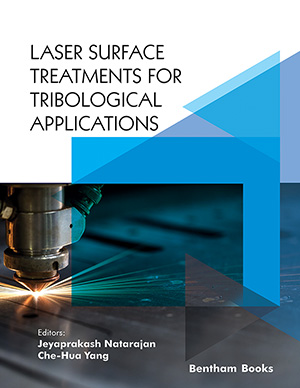Abstract
Recent research has focused on enhancing the tribological and wettability characteristics of materials through surface texturing, which involves the formation of specific patterns on the material surface through abrasive blasting, reactive-ion etching, lithography, and mechanical machining. One such competitive technique is laser texturing, which uses high-energy pulses to remove and etch material by direct absorption of laser energy followed by rapid melting and vaporizing. This chapter discusses the influences of laser texturing process parameters, such as laser wavelength, laser focusing technique, laser energy, pulse repetition rate, pulse duration, focal distance, direct/in-direct processing, dimple density, and geometry of texturing on the tribological properties. Next, the limitations in laser texturing and the postprocessing techniques to rectify those challenges are reviewed. Further, the recent advances of laser texturing in bio-medical applications for prolonging the service life of bio-implants are detailed.
Keywords:
Automobile, Bio-implants, Coating adhesion strength, Contact angle measurement, Corrosion, 2D and 3D topography, Friction, Hydrophilicity, Hydrophobicity, Laser fluence, Laser manufacturing, Laser scan speed, Laser surface modifications, Laser surface texturing, Laser texturing, LST modelling, Mechanical anchoring, Micro and nano texturing, Number of shots, Post- Processing, Surface modification of materials, Tribology, Wear.

